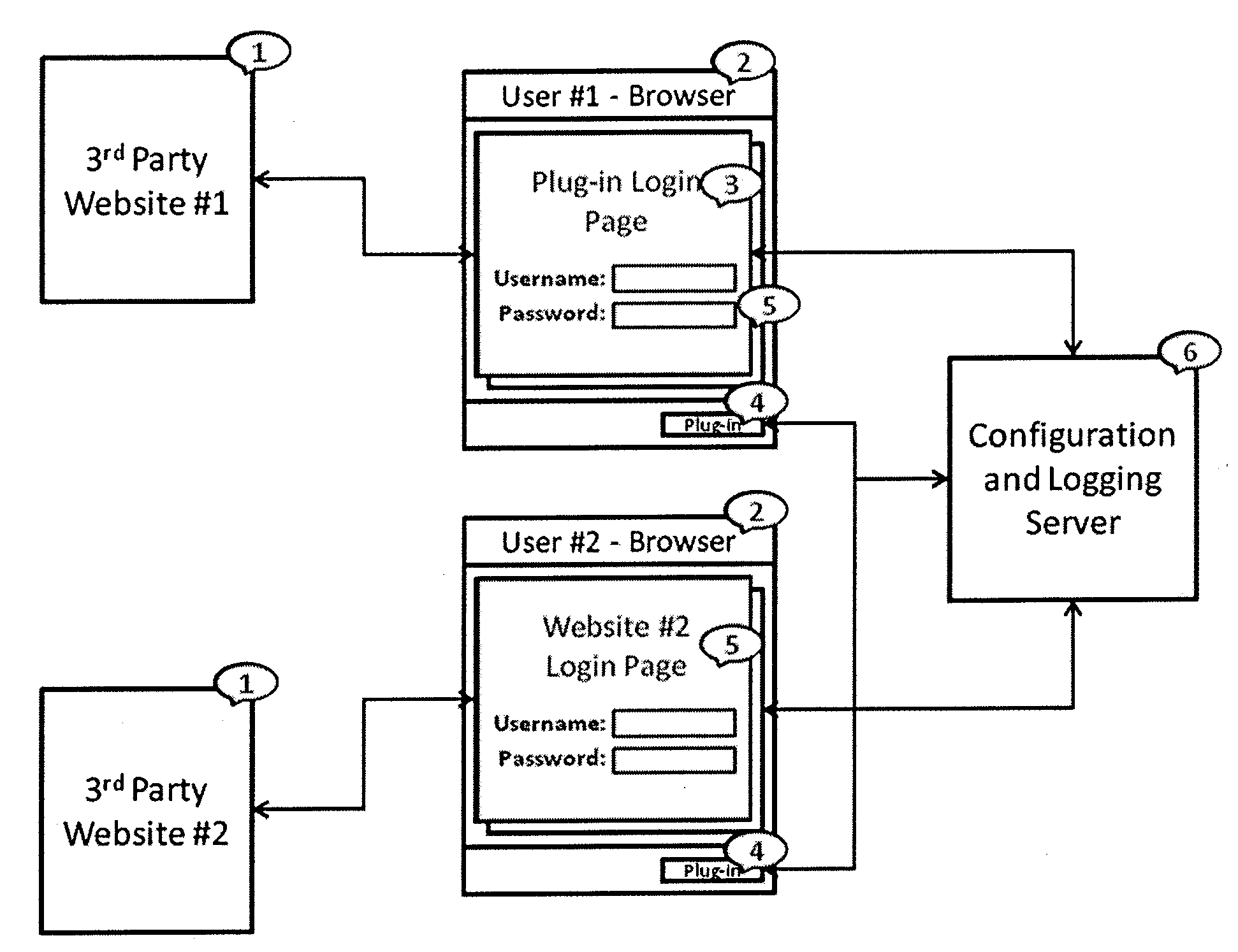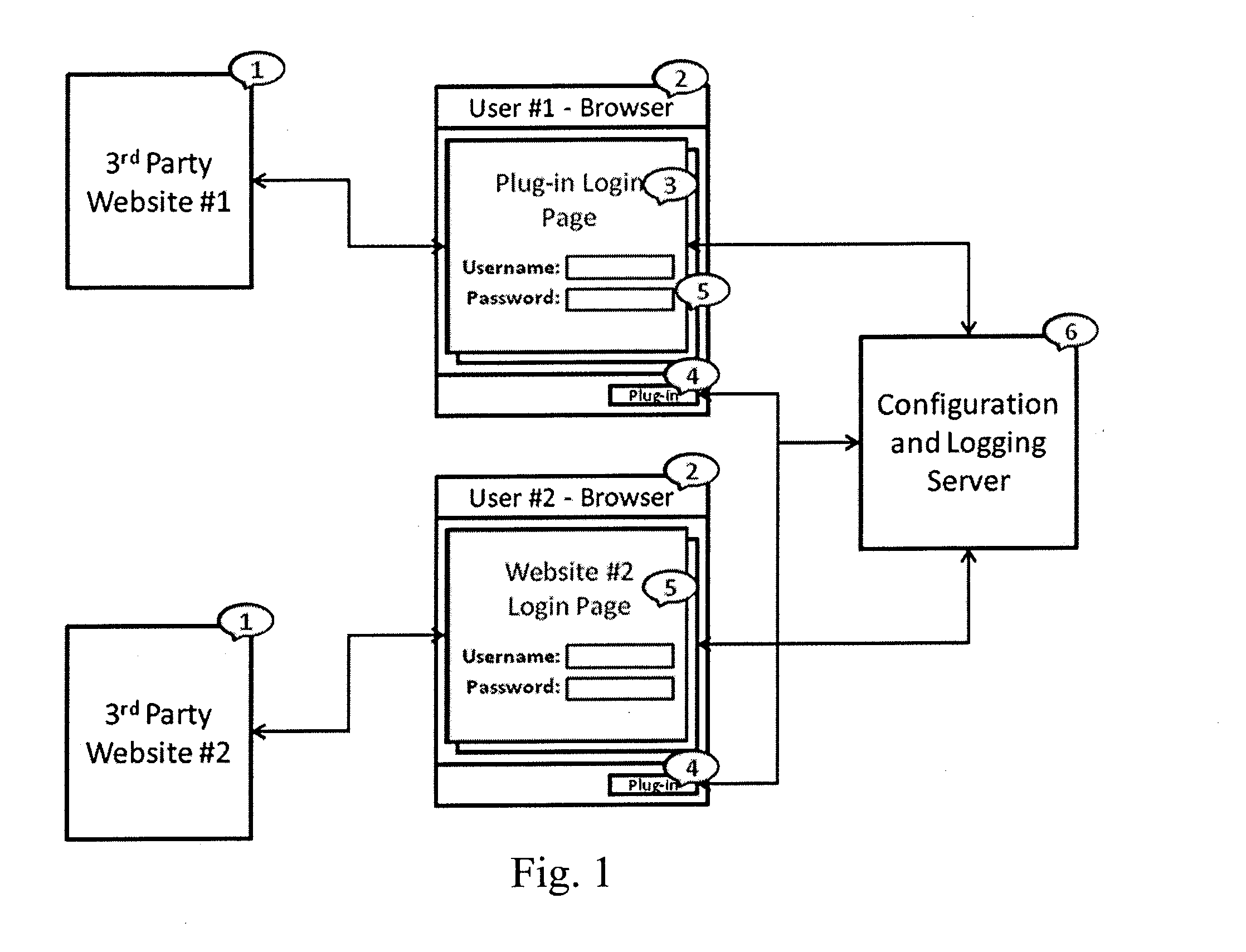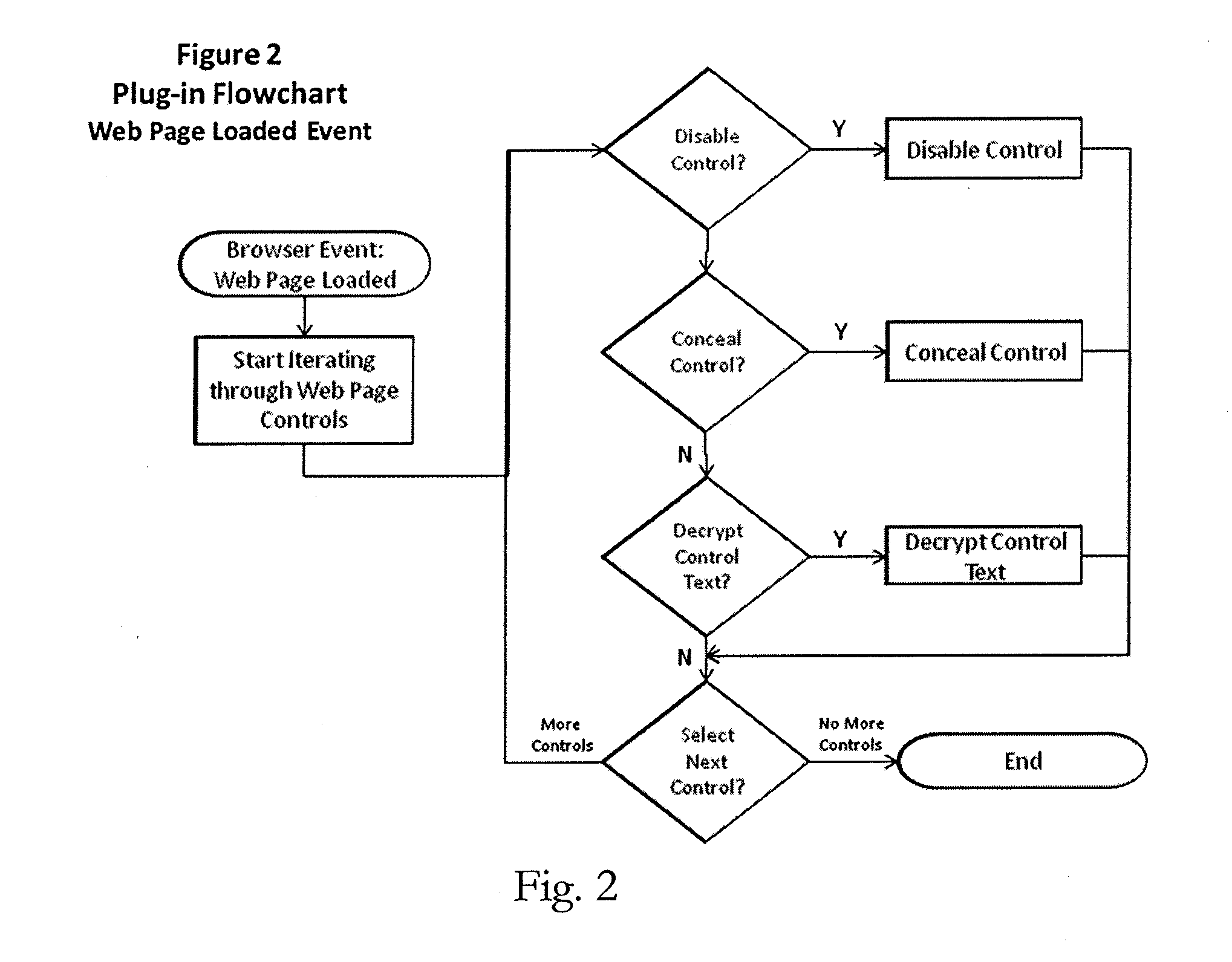Secure cloud computing system and method
a cloud computing and secure technology, applied in the field of cloud computing, can solve the problems of not being available at the moment, not being able to give a limited degree of control to the sandbox of the browser as opposed to the chrome of the user's browser, and not being able to gain access to any resources on the private network
- Summary
- Abstract
- Description
- Claims
- Application Information
AI Technical Summary
Benefits of technology
Problems solved by technology
Method used
Image
Examples
Embodiment Construction
[0042]A computer executable program, and computer executing the program, is provided for auditing and securing browser based web / cloud applications. It achieves this by inserting a “user action filter” between the user and the webpage, recording user actions and blocking the use of certain webpage controls (buttons, hyperlinks, etc) based on user profile and user group membership. The system operates by installing a browser plugin and associated code, and may operate cooperatively or independently with the data sources to be secured. For example, a preferred embodiment provides a client system build using JavaScript / Java / .NET / C++ Browser Plug-in's, and a server system built with Java / .NET / MySql Server, for configuration and audit trail.
[0043]The Browser Plug-in may provide a learning mode, in which a visual programming paradigm (graphic user interface) is provided for defining a user profile. Web pages / applications are secured based on the “learnt” user profile. The system may also ...
PUM
 Login to View More
Login to View More Abstract
Description
Claims
Application Information
 Login to View More
Login to View More - R&D
- Intellectual Property
- Life Sciences
- Materials
- Tech Scout
- Unparalleled Data Quality
- Higher Quality Content
- 60% Fewer Hallucinations
Browse by: Latest US Patents, China's latest patents, Technical Efficacy Thesaurus, Application Domain, Technology Topic, Popular Technical Reports.
© 2025 PatSnap. All rights reserved.Legal|Privacy policy|Modern Slavery Act Transparency Statement|Sitemap|About US| Contact US: help@patsnap.com



